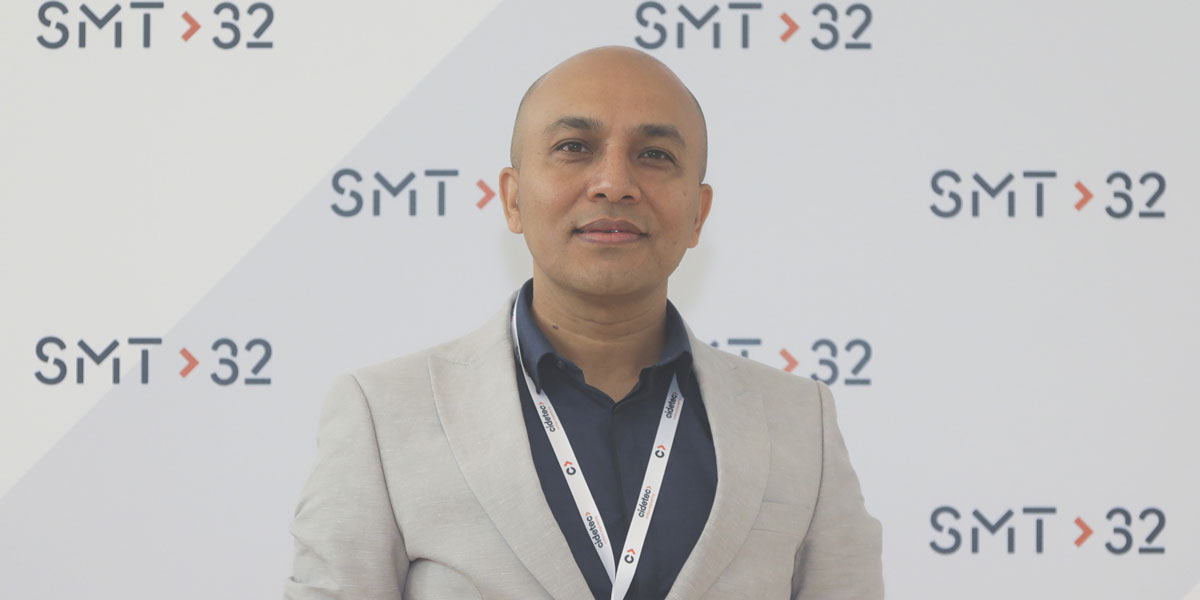The future of materials science: an interview with Suman Shrestha
Over the past 20 years or so, the materials science and surface engineering industry has surged in interest. Light alloys and advanced coating technologies are being examined by engineers across all sectors, instigating a huge growth in the industry. Engineers are seeking coatings to help them extend the life of components, reduce weight for increased performance and tackle ever-more complex engineering challenges.
Keronite are one of the leading names in surface engineering. Since the turn of the millennium, the company has pioneered an advanced coating technology called plasma electrolytic oxidation (PEO). This technology produces ultra-hard ceramic layers to uniquely enhance light alloy performance in the harshest of conditions. What’s more, the methodology is hugely flexible, which allows Keronite’s scientists to modify the electrochemistry and electrolyte bath composition to achieve a huge range coating characteristics – from highly corrosion-resistant duplex coatings to ultra-white coatings offering superior thermal-control in space.
Professor Suman Shrestha is one of the foremost figures at Keronite. Suman is the Vice President of Applications and works closely with key industry figures to develop revolutionary new surface coatings, solving some of the most prominent issues facing engineers. We sat down with him to talk all things PEO, chat about his background, his role at Keronite, and to get his thoughts on the future of the industry.
Beginnings in Russia
Suman began his journey to becoming a world-leading materials scientist at the spritely age of 18. One of his first exploits as a would-be engineer was to repair his Mother’s sewing machine. After failing to repair the machine, he promised to return and complete the work after his studies. He studied at university in St. Petersburg, having been offered a Russian government scholarship to complete his degree and Masters.
For his doctorate, Suman selected the University of Glasgow, having been offered positions at Universities throughout the world. It was here where Suman began to specialise in materials science, even writing his thesis on protective coatings for aqueous (highly corrosive) environments.
Whilst undertaking his thesis, Suman built his own corrosion-erosion rig. The rig was used in subsequent years by various PhD researchers. It’s this combination of scientific wisdom and practical foresight that makes Suman such an asset to the Keronite team and to their clients.
“I have always been hands on. I learnt how to cook, sew, knit, plastering, plumbing, bricklaying, and carpentry from a young age … getting my own hands dirty has always excited me and I’ve always loved getting results in the real world.”
Introducing the world to plasma electrolytic oxidation
Having been awarded his doctorate, Suman began working at The Welding Institute, a highly esteemed organisation in the industry. It was during his time here where he was first introduced to plasma electrolytic oxidation:
“It started in 2000, when I was developing thermal spray and cold spray technologies for aerospace, space and oil & gas. A group of Russian scientists approached me with a novel technology they wished to introduce to the United Kingdom.”
“At the time, the technology was not much more than a proven concept, so only small samples could be coated. My first involvement was to set up equipment next to my thermal spray facilities”.
With Suman’s expertise, the technology was quickly upscaled and readied for projects with the likes of the European Space Agency.
Continuing to increase life and reduce weight
To this day, Keronite’s scientists are still uncovering the full potential of PEO. The technique allows scientists with great knowledge of the technique to modify the electrochemical process to deliver unique coatings for specific customer requirements.
One particular application is catching the eye of the automotive industry. Suman has been involved in Keronite’s preliminary tests for coatings fit for pistons and powertrain components to improve fuel efficiency in passenger vehicles. Of course, this comes shortly after Keronite announced that they had been awarded an InnovateUK grant to bring lightweight disc brakes to market.
“We’re really excited about the possibilities of plasma electrolytic oxidation of pistons, especially in improving the fuel efficiency and passenger vehicles and brake discs for lightweight EVs. There are also some especially exciting developments coming to fruition later this year, for example the BepiColombo mission to Mercury.”
It’s an exciting time to be at Keronite
Suman has been part of Keronite’s journey since the beginning. He’s now part of Keronite’s technical advisory board, the team that helps develop coatings and prepares them for industrialisation, so developed solutions don’t only work in the confines of the lab.
Throughout Suman’s career, he’s published more than 60 peer-reviewed papers on surface technology, and now sits on the editorial board of three journals: The Journal of Surface Engineering, The Journal of Tribology (Materials, Surfaces and Interfaces) and The American Journal for Aerospace Engineering. Not only is Suman helping advance the coatings at Keronite, but he’s helping lead the way in the field of surface technologies with the brightest minds in the field.
To learn more about Keronite’s PEO technology, get our free ‘What is Plasma Electrolytic Oxidation?’ white paper online now. To keep up-to-date with the latest developments at Keronite, subscribe to the company’s corporate newsletter.
